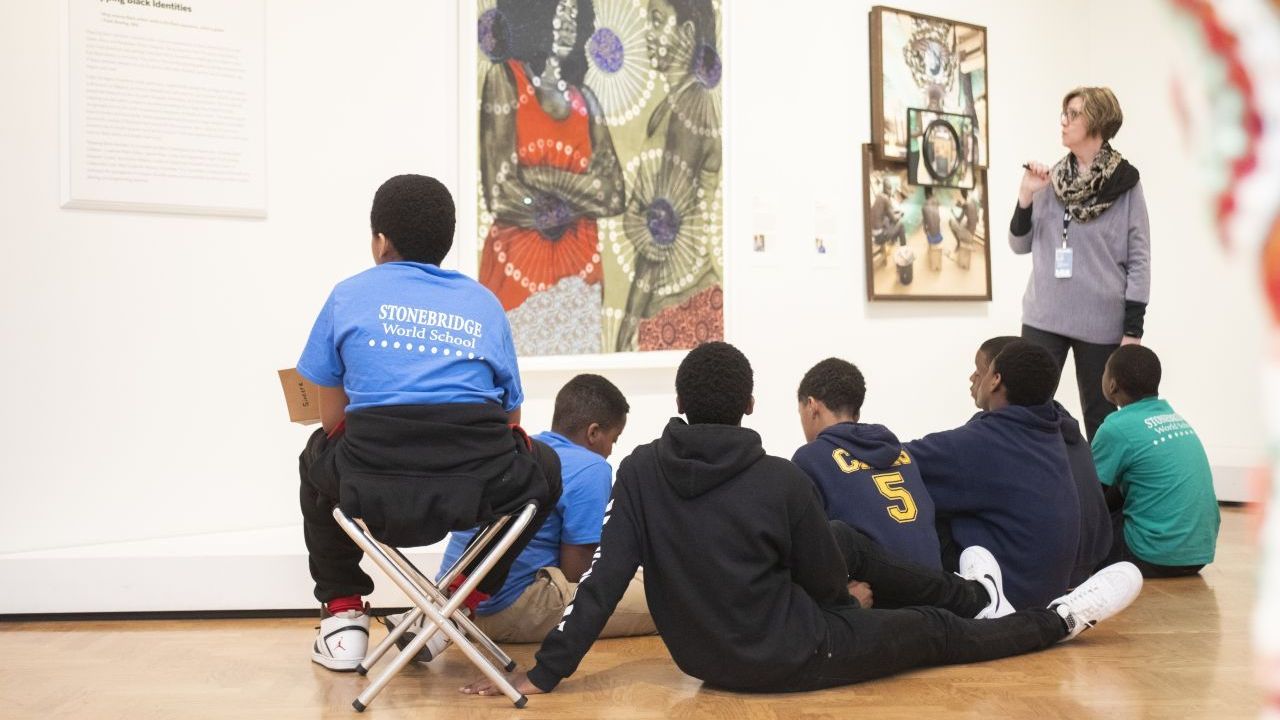
As Learning staff at the Minneapolis Institute of Art (Mia), we regularly assess our tour offerings to understand what’s working well or where we may need to find new approaches. Over the past five years, several factors have pulled us in the latter direction.
Watching the COVID pandemic unfold, followed swiftly by the murder of George Floyd just miles away from our museum, we contemplated the changed environment we would face when we returned to in-person programs. For this environment, we felt it was critical to design new student tours that would directly address social justice and invite conversations about personal and cultural identity. After learning about the efficacy of social-emotional learning (SEL) techniques through our work with empathy, we wanted to incorporate them deeper into our practices. Finally, we saw a need to embrace choice-based learning to ensure meaningful and engaging tour experiences for all ages.
In the end, we developed three new student tour formats and one new format for adults. The new student tours cover the topics of Art and Human Connections (grounded in SEL), Art and Identity, and Art and Activism—which we chose based on a survey of teachers early in the process. We continued to solicit input from primary and secondary teachers as we designed the tours, asking them to respond to the artworks and content in terms of relevance to their students, language considerations, and connectedness to their curriculum. The new format for adults, Cross Currents, is designed to connect artworks to current conversations and explore multiple points of view. Amid declining participation in our traditional one-hour public tours, we wanted to offer a new kind of guided gallery experience, inviting participants to visit the museum at their own pace and choose their own experience in selected galleries connected by a common theme.
To strengthen the skills needed for these new approaches, the Learning team designed a refresher course for all our tour guides engaged in in-gallery and virtual teaching. The course included in-depth preparation for leading discussions focused on identity, activism, and SEL—including sessions with teachers, trauma specialists, and cultural fluency experts—and guidance on integrating aspects of choice into tours.
Then we were ready to debut our four new formats:
Art and Human Connections
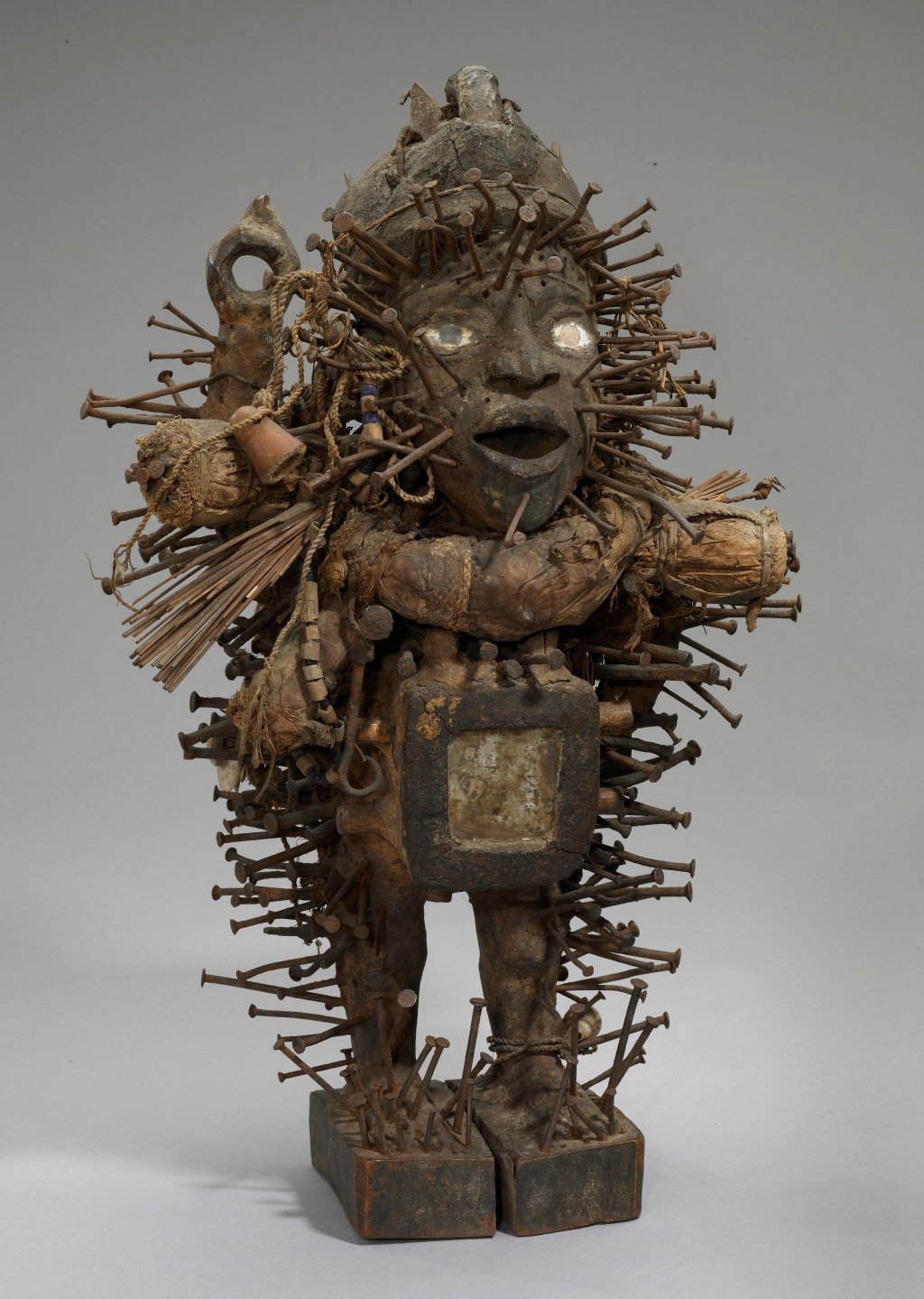
Mia’s involvement with SEL began prior the pandemic, when the Learning Innovation team was studying the impact of the visual arts on the development of empathy skills. This led us to reach out to Minneapolis Public Schools, whom we have a longstanding partnership with, to talk to staff working to introduce SEL district-wide. The growing need for and integration of SEL in schools across the country prompted us to explore the many ways art museum experiences could support the acquisition of skills like empathy, emotions recognition, and perspective-taking, as well as our museum’s own diversity and inclusion goals. We designed and piloted SEL tours for third-grade students, which became the seed for the Human Connections tours we have offered for students in kindergarten through eighth grade in the wake of the pandemic.
Skip over related stories to continue reading articleThe Art and Human Connections tours support the SEL goals of self-awareness and social awareness for students and teachers. For example, an exercise based around an early abstract painting by Yayoi Kusama encourages learners to name how they feel while looking at or drawing the work’s colorful forms, dots, and lines. It also opens a conversation about how Kusama’s painting was a means of managing her mental health. A discussion of a Kongo power figure from the Democratic Republic of Congo covered in blades explores how it was instrumental to community problem-solving and well-being. A tableau vivant activity in front of a Dutch baroque painting invites students to think about the characters’ emotions, and to reflect on when peer pressure might have led them to do or say hurtful things. Additional artworks focus on respect, collaboration, cultural pride, and kindness.
The success of these tours lies in the incorporation of activities that engage different learning modalities. Students look closely, discuss, draw, write, pose, and interpret. Tour guides encourage agreement and disagreement to highlight how people experience situations and artworks differently based on their personal experiences.
We are fortunate to have Minnesota Department of Education’s learning goals and grade-level benchmarks to ground our work. We are also grateful to SEL staff at Minneapolis Public Schools for helping us learn how they introduced and integrated SEL across schools and disciplines.
Art and Identity
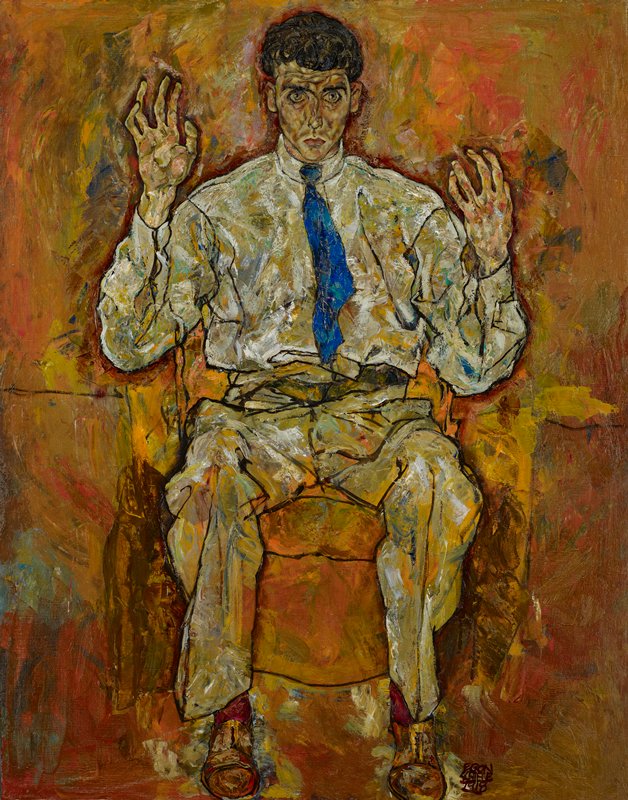
The Art and Identity tour aims to engage students with the question, “What influences or informs our identities?” With Mia’s encyclopedic collection, our guides can use this theme to dive into varied cultures and eras, using a series of lenses to explore influences on identity through the art they discuss.
For example, one of these lenses explores how the biological or physical aspects of our bodies influence perceptions of our identity. To discuss this, we sometimes use Egon Schiele’s expressive portrait of his friend Albert Paris von Gütersloh from 1918, which our review teachers said their students would be drawn to for the gestures, colors, dynamic brushstrokes, and facial expression. We start by asking the students, “If Paris von Gütersloh could tell you a little bit about himself, what do you think he would say?” After they share some ideas, we move onto a broader question, asking, “What conclusions do we draw about someone’s identity (or characteristics) based on what we see?” Then, to connect this to students’ own experiences, we might ask them to share in pairs, “Have people ever assumed something about your identity, based on what they see? How did that make you feel?”
These questions help students realize how quickly we form opinions about identity just based on what we see and consider how we might work to avoid these assumptions about someone we meet. Other lenses in the tours include family and friends, environment, community, faith, gender, cultural heritage or ethnicity, work or hobbies, and socioeconomic status.
Initially, we believed this tour would primarily appeal to middle and high school teachers, but we have been surprised to receive requests from a range of kindergarten through sixth-grade teachers as well, which has made us realize that all teachers are looking for broad-ranging discussions that are relevant to their students’ lives.
Art and Activism
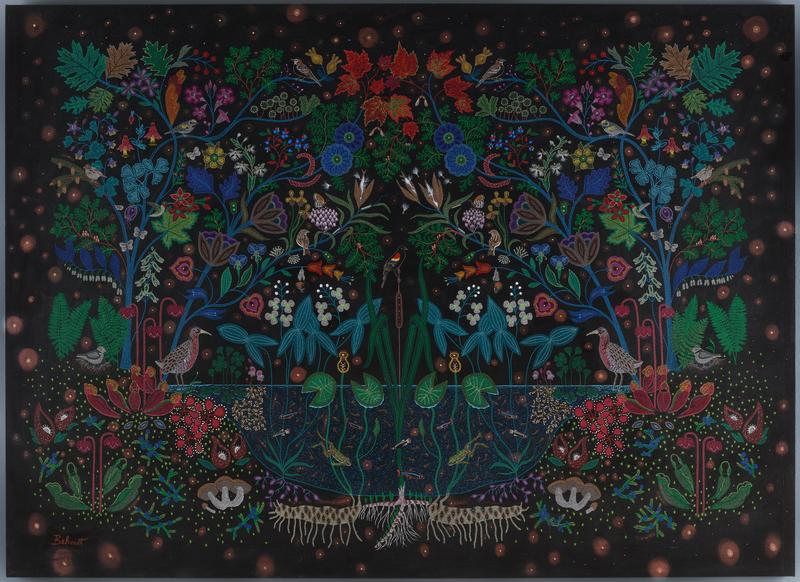
Art and Activism tours discuss how artists use visual imagery to inspire activism and bring about social change. This includes exploring how they invoke empathy, which involves looking outside ourselves and trying to identify with the experiences of others. Looking together carefully at works of art can teach students how to discuss issues and disagree with one another respectfully, a life skill that will serve them as individuals as well as members of a community.
The artworks included in the tour present a range of forms of activism. Again, we relied on feedback from our review teachers to identify what would be most relevant to students. For example, one teacher recommended a 1963 photograph by Gordon Parks depicting a protest in Harlem where children and adults proclaim “Our freedom can’t wait!,” because the theme of advocating for BIPOC communities remains important sixty years later. The photograph also shows how young people can play a role in bringing attention to social issues.
Another work they recommended was Christi Belcourt’s painting It’s a Delicate Balance, which documents endangered native plants and animals. Belcourt believes that when we no longer respect the rules of nature, we as a species are out of balance. Teachers saw this work as providing the opportunity to discuss humans’ impact on the environment and the importance of connections and balance in nature. It also showcases Belcourt’s belief that artists can use their work to raise awareness so that change can happen, leading students to contemplate what they would do to make people aware of social justice issues important to them.
While viewing the works, through open-ended questions and prompts, students are asked to offer their own perspectives, consider how the ideas expressed relate to our lives today, and share what role they think art and art-making can play in social activism.
Cross Currents
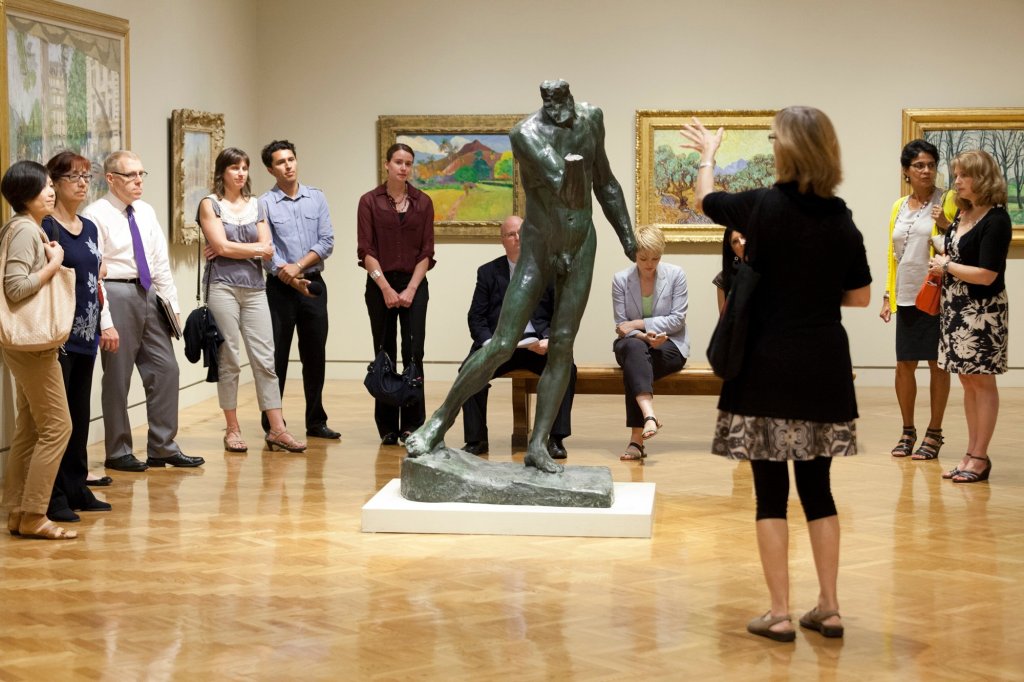
Our new public tour format, Cross Currents, evolved out of our participation in the annual “Slow Art Day” event at museums around the world. We found that guides and visitors alike welcomed this yearly opportunity to slow down and spend more time with fewer artworks—so much so that we decided to make it a regular event. Now, during monthly Cross Currents tours, visitors pick up a tour map that indicates guide-facilitated stops throughout the museum. Each month offers a new theme and four galleries to explore during a two-hour time period, which visitors can choose to spend as little or as much time in as they like. Past themes have ranged from “Telling Stories” to “Fresh Perspectives on Art,” “Women in Art,” and “Celebrating the Season” during the global winter holidays. After introducing Cross Currents in the Fall of 2021, our public tour numbers rapidly increased from hundreds of participants to thousands, confirming that visitors enjoy this new format.
These new tours and formats engage learners of all ages in new ways. They also support the museum’s mission to make accessible outstanding works of art from the world’s diverse cultures. As educators, we are committed to meeting our museum’s diversity, equity, and inclusion goals by offering new ways to access content and help learners make deeper connections between their lives and the art in the galleries. We acknowledge that we do this work in partnership with Mia’s dedicated tour guides who facilitate our tour experiences and inspire wonder through the power of art.
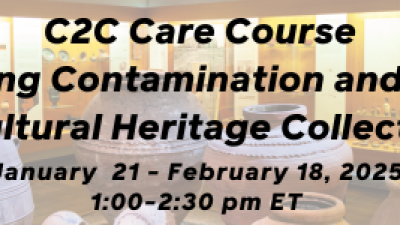


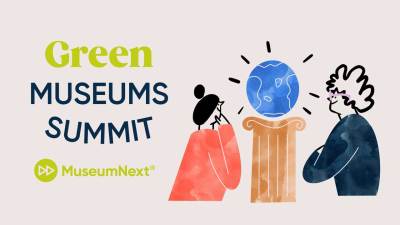
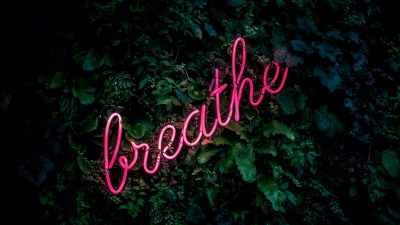
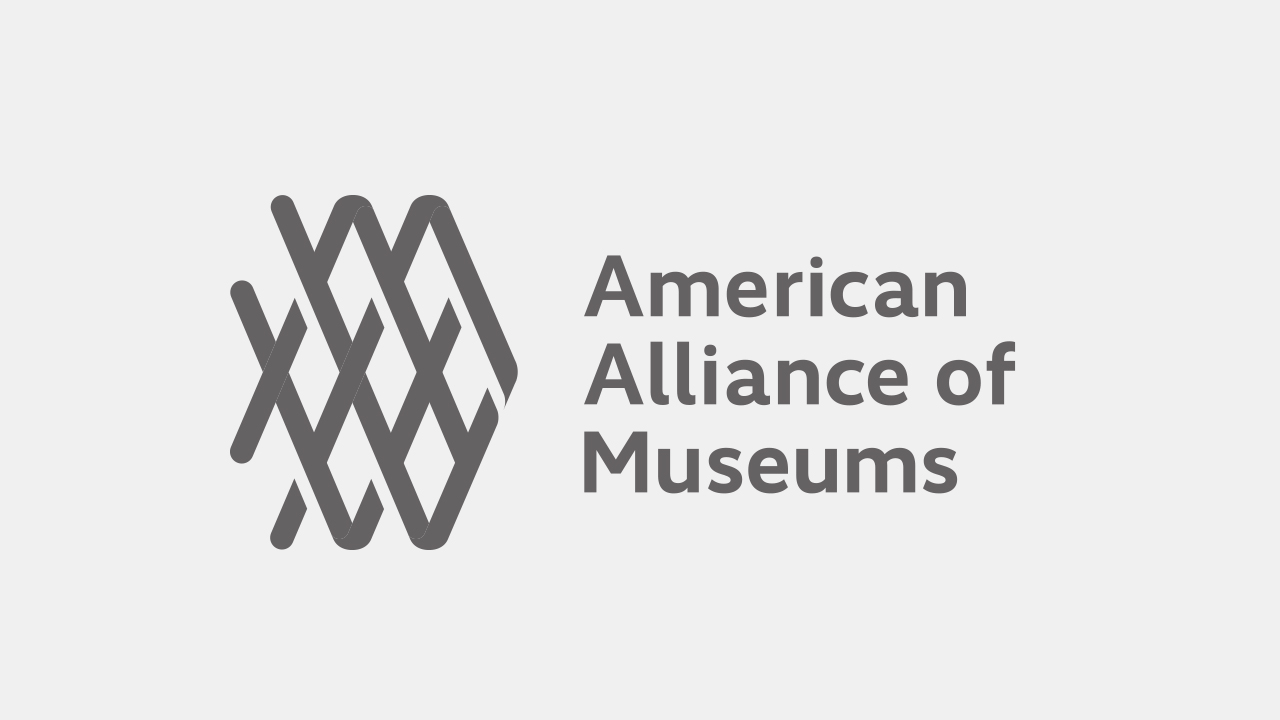


Comments